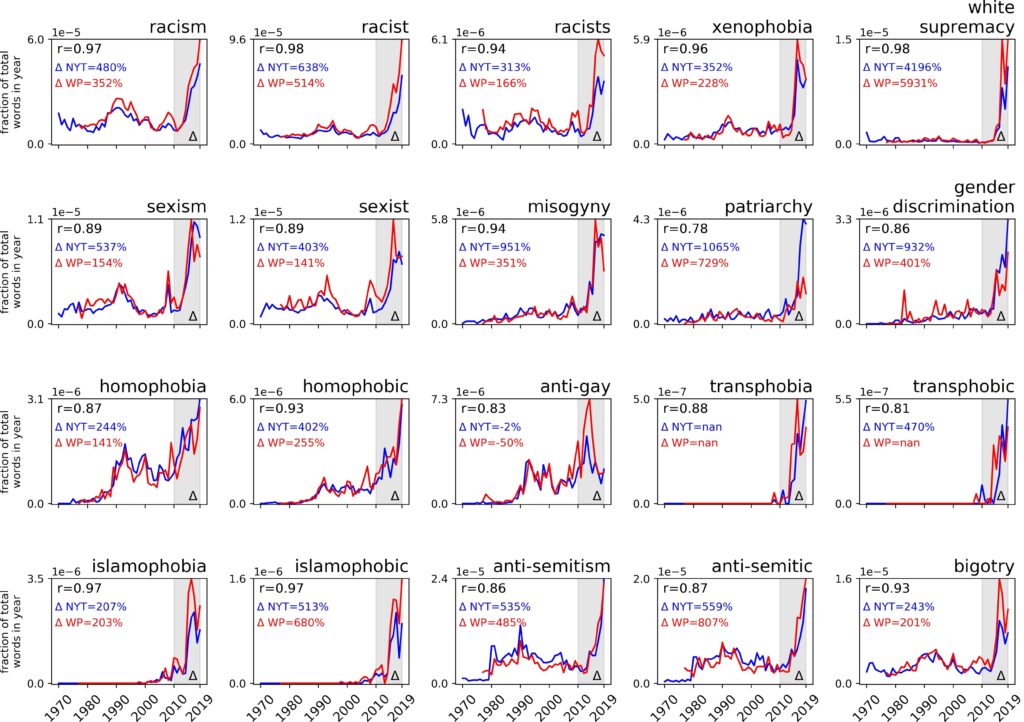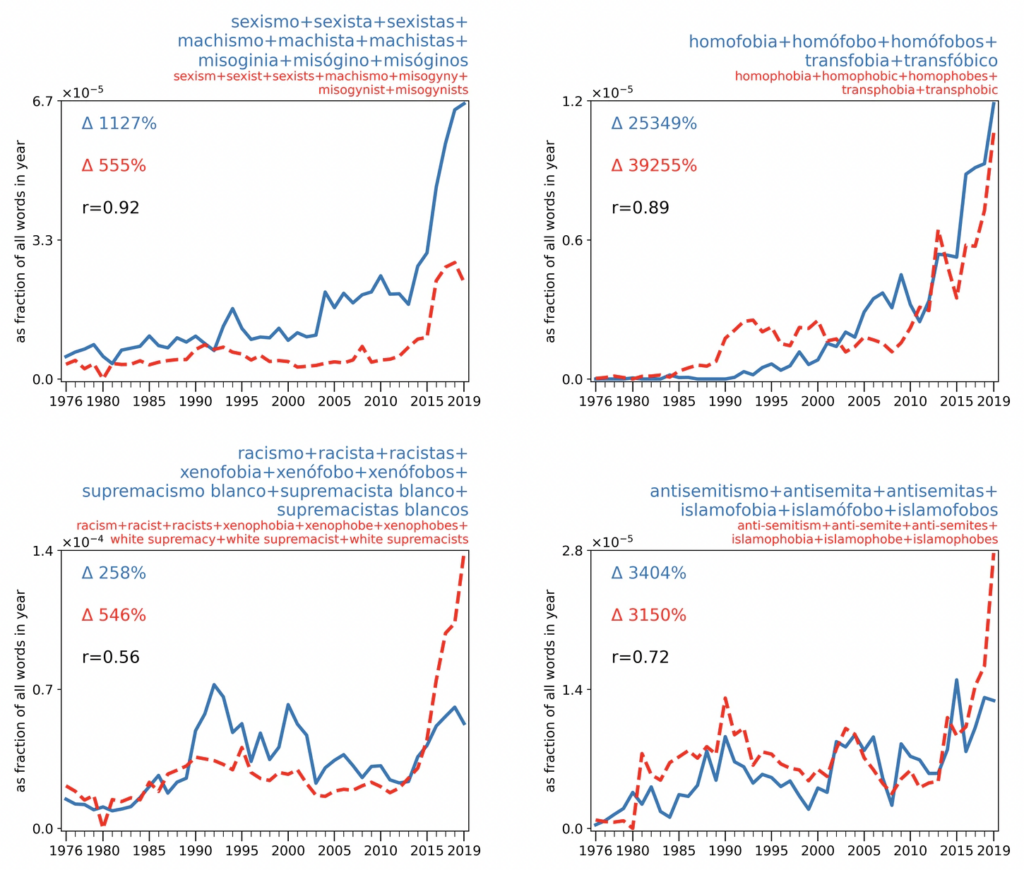‘The Great Awokening’ is the term that’s caught on for describing the rapid adoption of woke ideology by journalists, academics, politicians, business leaders and other elites in the English-speaking world, beginning in around 2012.
As I’ve noted before, it can be seen in a variety of indicators: social attitudes among white ‘liberals’; the left-right tilt of the Democratic Party manifesto; the left-right position of Supreme Court Justices; speaker disinvitation attempts at universities; and Google searches.
But perhaps the most powerful evidence for the Great Awokening comes from word usage frequencies in major newspapers. As the researcher David Rozado (whom I’ve mentioned before in the Daily Sceptic) has shown, the frequency with which the New York Times and the Washington Post use various words denoting prejudice has skyrocketed in recent years.

In 2019, the New York Times used ‘white supremacy’ >4000% more than it had done in 2010. And for the Washington Post, it was almost 6000% more.
While nobody (except a Guardian columnist) could deny there has been rapid cultural shift in the Anglosphere, it is less clear whether non-English speaking countries have been affected. After all, we heard last year that various French politicians and intellectuals were resisting “certain social science theories entirely imported from the United States”, in the words of Emmanuel Macron.
Since then, however, Macron has done a U-turn, appointing a woke education minister who specialises in “U.S. History and minority issues”. So has the Great Awokening engulfed non-English speaking countries, or hasn’t it?
Well, in the case of Spain at least, the answer appears to be yes. Rozado has repeated his analysis of word usage frequencies for Spain’s ‘newspaper of record’ El País and finds the same pattern as seen in the American media – with one or two differences. El País is pretty much Spain’s equivalent of the New York Times, the country’s most influential centre-left newspaper.

In the image above, words denoting prejudice are classified into four themes: those relating to sex; those relating to sexual orientation and ‘gender identity’; those relating to race; and those relating to religion. The blue line on each chart corresponds to El País, while the red line corresponds to the New York Times.
In three out of four charts, the pattern for the two newspapers is roughly the same. By contrast, in the lower-left chart, the blue and red lines diverge substantially. While the usage of terms like ‘racism’ and ‘white supremacy’ has risen dramatically in the New York Times, there is no obvious trend in El País.
Interestingly, as the upper-right chart shows, the usage of terms like ‘sexism’ and ‘misogyny’ has increased far more steeply in El País than in the New York Times. Hence you could say that Spain’s Great Awokening has been more focussed on sex, whereas America’s has been more focussed on race.
Rozado has offered compelling evidence that the Great Awokening is not unique to the English-speaking world. Next he could apply his methods to France. (He has already applied them to the U.K. in a collaboration with the political scientist Matthew Goodwin.)











To join in with the discussion please make a donation to The Daily Sceptic.
Profanity and abuse will be removed and may lead to a permanent ban.
But NOBODY reads newspapers any more. They’re not even “tomorrow’s fisn chip paper”. Remember: an empty vessel makes the most noise.